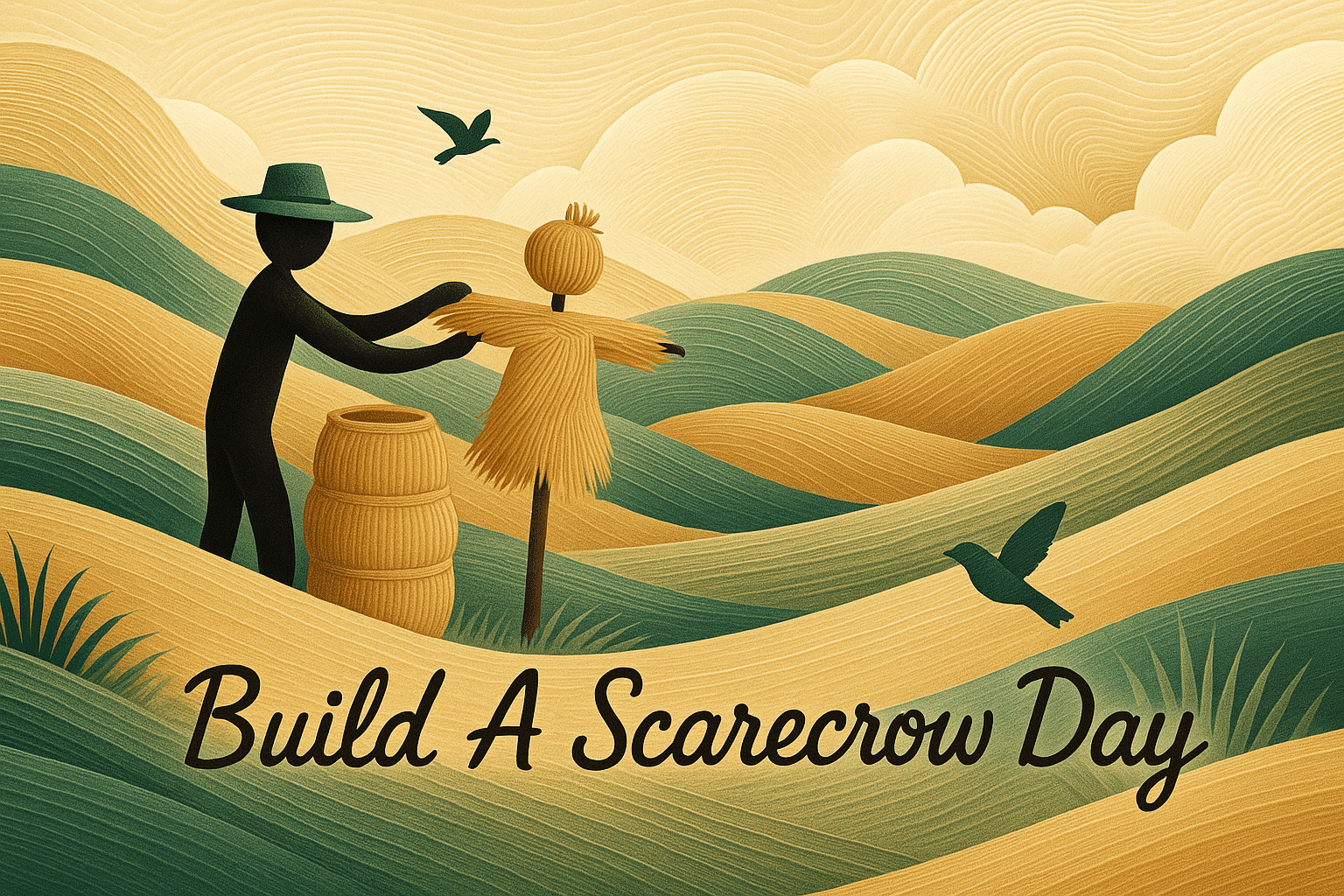What is Build a Scarecrow Day?
Build a Scarecrow Day is held every year on the first Sunday in July and is celebrated worldwide. In 2025, this falls on July 6. The day celebrates the time-honored tradition of crafting scarecrows;figures used to protect crops from birds;and invites people of all ages to get creative, connect with nature, and engage with agricultural heritage.
Scarecrows are practical tools, but also symbols of rural life and creativity. From simple stick figures with straw hats to elaborate characters made with recycled materials, each scarecrow is unique. This day encourages hands-on fun and fosters a sense of community through building, decorating, and sharing scarecrows.
What started as a practical tool in ancient farming has evolved into an annual event that blends history, sustainability, and imagination.
History and Origin
Scarecrows have existed for over 3,000 years. Ancient Egyptians placed them near the Nile to guard wheat. Japanese farmers built kakashi, figures dressed in old clothes to watch over rice fields. In Europe, scarecrows became common in medieval farming, and the term “scarecrow” first appeared in English during the 16th century.
The origins of Build a Scarecrow Day are unclear, but it likely began in the United States as a community tradition and seasonal activity. Over time, it spread beyond borders, embraced by schools, farms, and local festivals worldwide.
The day reminds people of the connection between farming and the land. It’s a playful nod to a serious past, where food security relied on creative solutions and watchful guardians in the fields.
Who participates in Build a Scarecrow Day?
- Farmers: Create scarecrows to help protect crops and maintain traditions.
- Gardeners: Build scarecrows for decoration and natural pest control in home gardens.
- Schools and educators: Use the day for creative outdoor learning and agricultural education.
- Community groups: Organize events and contests that bring neighborhoods together.
- Families: Spend time together building scarecrows for fun, learning, and bonding.
Slogans and Themes
Slogans like “Guardians of the Garden,” “Stuffed with Fun,” and “Stand Tall, Scare All” reflect the mix of whimsy and tradition tied to this day. The themes center on community, creativity, sustainable gardening, and rural heritage. Whether silly or serious, every scarecrow has a story.
Colors, Symbols, and Patterns
Colors
- Brown: Represents soil, straw, and connection to the earth.
- Green: Symbolizes crops, nature, and growing things.
- Orange: Evokes autumn, harvest, and tradition.
Symbols
- Scarecrow figure: The iconic image of the day, handmade and full of personality.
- Straw or hay: Commonly used for stuffing scarecrows and symbolizing the harvest.
- Birds: Represent the challenge scarecrows are designed to deter.
Patterns
- Plaid shirts: A classic clothing choice for scarecrows, rustic and recognizable.
- Patchwork fabrics: Emphasize creativity, resourcefulness, and reuse.
- Hand-stitched seams: Highlight the handmade quality of each creation.
Most Used Hashtags
- #BuildAScarecrowDay
- #ScarecrowCelebration
- #DIYScarecrow
- #GardenGuardians
- #ScarecrowFestival
How do you celebrate Build a Scarecrow Day?
- Build your own scarecrow: Use old clothes, sticks, hay, and buttons to make a scarecrow in your own style.
- Join a community event: Take part in local scarecrow contests or group-building sessions.
- Decorate your garden: Place your scarecrow outside to watch over your plants and bring charm to your yard.
- Teach others: Use the day to educate about farming, recycling, and creativity through scarecrow-making.
- Share online: Post photos of your scarecrow with hashtags to inspire others and connect with builders around the world.
Why is Build a Scarecrow Day important?
Build a Scarecrow Day is important because it connects people to the land, to each other, and to their own creativity. It honors centuries of farming practice while offering a light-hearted way to learn, build, and grow together. In a world moving fast, this day invites us to slow down, use our hands, and celebrate the resourcefulness of rural life. The scarecrow stands for protection, tradition, and imagination;all wrapped in old flannel and a straw hat.
Features
First Sunday of July: Build A Scarecrow Day (United States)
Why do you keep falling for the same type?
Read the article Lovemaps: the hidden blueprint of our love.

